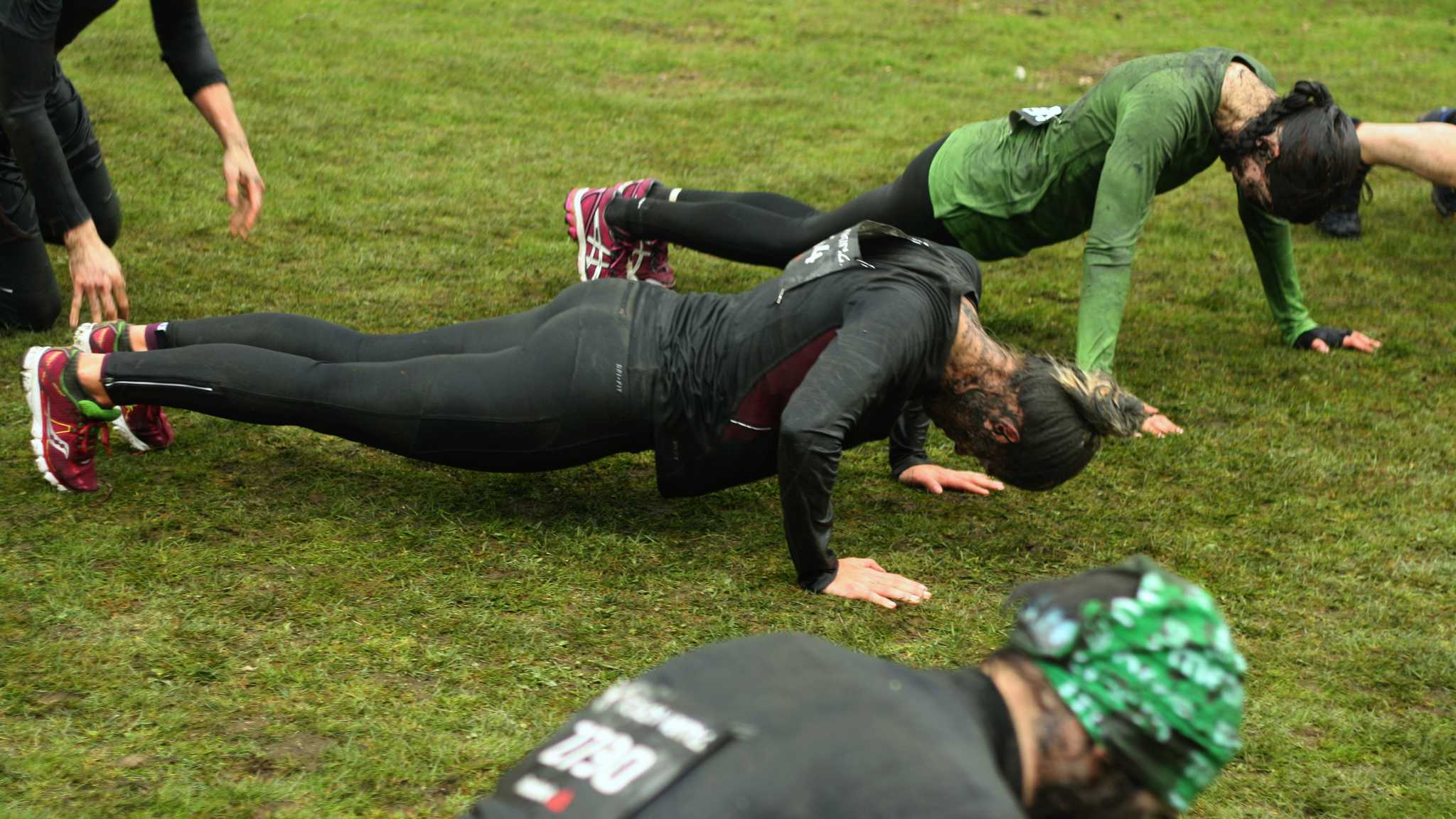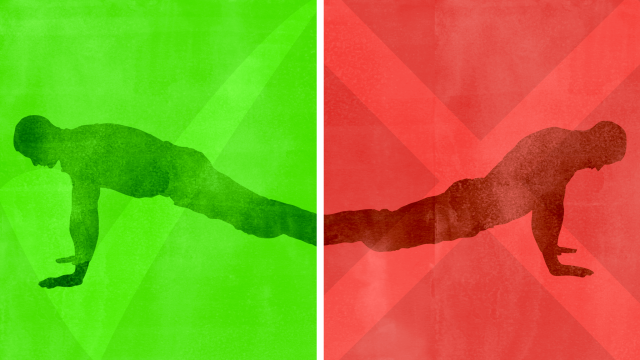Push-ups look so deceptively easy. Everyone knows how to do them in theory, but when asked to do one, most people make various little mistakes that can cause problems and injuries down the road. These subtle mistakes are common and simple to fix once you’re aware.
Title illustration by Sam Woolley. Additional photo by blondinrikard.
It’s cool that some people can crank out those push-ups like they’re a human jackhammer, but they’re likely only going down halfway in each rep. That’s doing half the work. So even if you’re doing 10 or 20 push-ups, there’s a chance you could be cheating your push-up somewhere.
There’s Not Enough Tension in Your Body
We’ve written extensively on what good push-up form looks like, but this video from Calisthenic Movement is a good refresher. It goes into a lot of detail, but the key takeaways are that the back of your head, your upper back, and your butt are generally in line, or in “neutral” position; and you keep your knees straight. Altogether, your body ideally forms a relatively straight line, kind of like in a plank.
If you let your hips sag, you end up doing weird things with your lower back and shoulders to help you cheat the push-up. That also means you’re not engaging your core muscles as much as you should be. After all, it’s your core that helps you maintain that rigid position throughout. To use your core, think about actively contracting your abdominals and squeezing your butt to keep tension throughout your body. If you have trouble holding that tension throughout the movement, practice the push-up with easier variations, like doing push-ups on your knees.
You Emphasise Quantity Over Quality
In a proper push-up, you should always go with your full range of motion. Not everyone has the shoulder or wrist health to touch their nose to the ground. If you can though, lower yourself and try to let your chest nearly make contact with the floor, and then exhale forcefully as you come back up. That does mean you have to work a bit harder to push up, but that’s the point!
When you’re at the top, imagine that you’re “pushing the floor away” and lengthening your arms to reach with your shoulders (without letting your back simply round). You should inhale around this time, too, with the goal being to imagine “pulling air” into your upper back. We often talk about the strength-related benefits from push-ups, but this reach is important. Mainly, it teaches you to use those oft-neglected muscles that help your posture.
After all of that, you’ve just done one good-looking push-up. Repeat this for your other ones and you’ll be golden. Be sure to take them slow and steady to get the full benefits of your push-ups. Remember, it’s not about how many push-ups you can do total, but how many you can do well.
You Ignore Your Elbow Position
The first thing most people do when they get into a push-up position is spread their elbows straight out to their sides. So when someone looks at them from above, they look like a T. This is a big no-no, because when you flare out your elbows like that, you end up working your chest and triceps less, and also put a lot more stress on your shoulders.
Mike Robertson, a strength and performance coach and owner of Robertson Training Systems, noted that ideally your elbows should form a 35- or 45-degree angle, relative to your body. This simple change immediately gives you better leverage to create more pushing force and works more muscles with less stress on your joints. There’s no need for a protractor here. The quick fix is to keep your elbows above your wrists and focus on making an arrow formation with your body: your body and legs make the straight line, while your arms form the sides of the arrow.
You Don’t Pay Attention to Your Hands

Edit image caption (optional)
Where you lay your hands on the floor matters just as much as anything else in preparing for your push-up.
For most people, the biggest mistake is that their hands point toward each other. Your hand placement changes your elbow position, making them flare out more, and affects the muscles that you work, too. Keep your fingers pointed forward and imagine “pushing the floor apart.” That way you keep your elbows closer to your sides.
Other times your hands could be too close together. The closer your hands are to each other, the more you work out your triceps instead of your chest muscles. If that’s the intention, then cool; but if you want to do the standard push-up, you need to spread your hands a bit farther apart from each other, just a tad outside shoulder width.
If you’re looking at this list and think you have the perfect push-up down pat, check out these advanced push-up variations.

Comments
One response to “The Four Most Common Push-Up Mistakes (And How To Fix Them)”
Another tip for people struggling with pushups is to change the elevation. If you’re particularly weak (don’t take that in a bad way) you can do a pushup with your hands on a box, bench or table to reduce the amount of force you need. Work you way up (or rather down) to the ground and regular pushups.
Just make sure whatever you’re pushing against is firmly locked in place. Don’t use a chair say or it might slide out from under you at an inopportune moment.
There’s really is no “wrong” way to do pushups UNLESS the movement causes injury due to stress/pressure placed on joints. Other than that, if the movement is safe, as long as you have purpose, any type of pushups is fine.
In this case, it looks like the “classic” or “military” style of pushups is being advocated.
Fingers spread out = to form a stable base of support.
Body should be of hollow body = transferable to gymnastics and a wide range of advance body-weight movements for the future (eg = levers, pullups, plank)
Internal rotation of the elbows = correct application of force as well as stability also transferable to pullups and dips.
Feet together OR spread for an easier variation for any individual wanting to progress.
As @Skrybe mentioned above, elevation is a great form of progression for beginners.